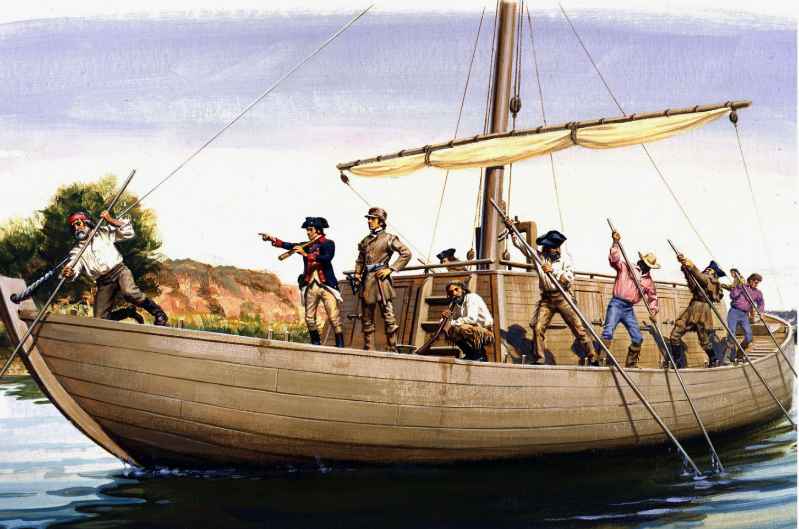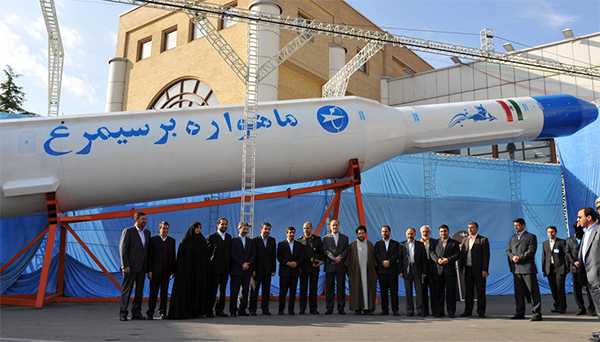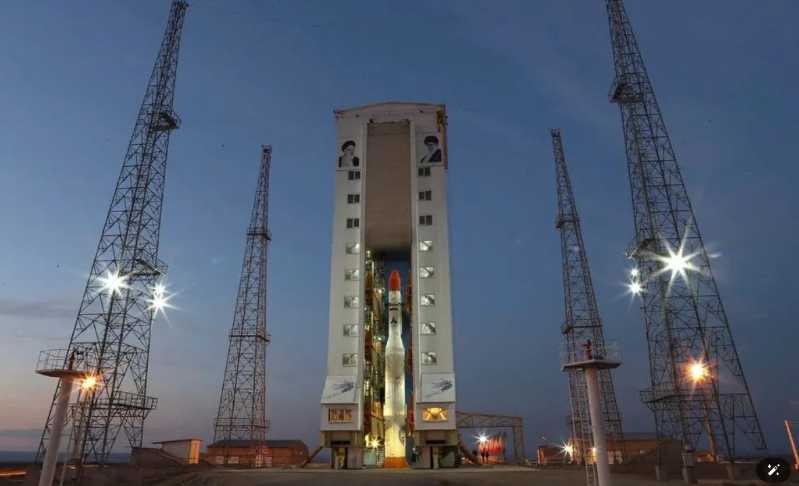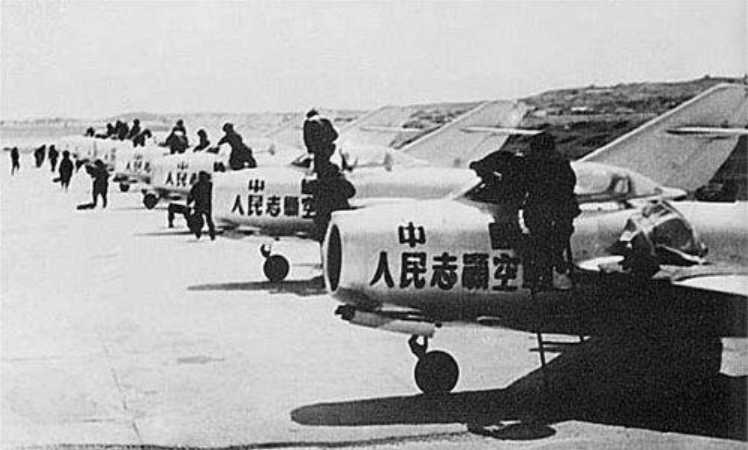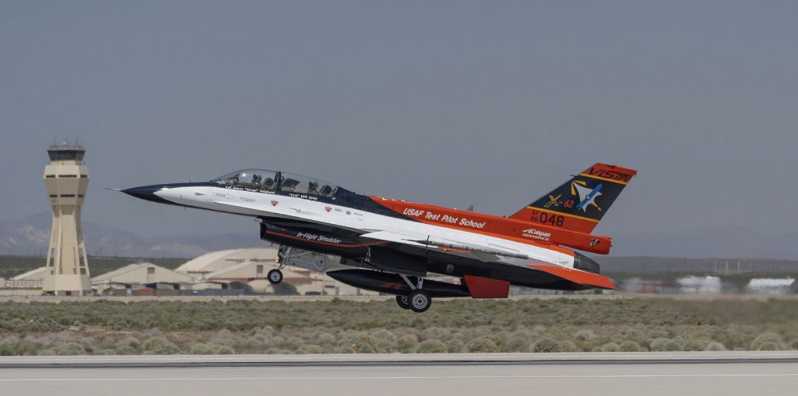When Jim Bridger was born in Virginia, the dawn of the 19th century was just beginning, and the United States of America had just turned 28 years old. It is said that in 1804, the year Jim Bridger was born, Captain Meriwether Lewis and Second Lieutenant William Clark of the U.S. Army, in the name of President Jefferson, led an expedition to cross the Rocky Mountains. This heroic undertaking was part of the vigorous westward movement on the American continent that lasted throughout the 19th century. Accompanying this movement was the bloody migration of Indians, the rise and fall of power between slave states and free states, the desire fueled by gold mines, and the ambition to open up the new world. For the early explorers who followed one after another, this was a wilderness road leading to glory and freedom, and a completely new life. Bridger was born at the right time. But he did not know that he would embrace the West all his life and use his feet to open up countless new roads in the Rocky Mountains that had just been known to Americans.
From the southern part of present-day Colorado to the Canadian border, between those mountains that stretch for 1,500 kilometers and are about 4,000 meters above sea level, his name will be marked by future generations as an explorer, army guide, scout, fluent in English, French, Spanish and multiple Indian languages. A legend on the American continent, written into biographies, novels, movies and many place names. He personally committed to the development of the West, nature conservation and racial harmony, and interacted with many famous historical figures, through whom he further influenced the United States.
Hard Times
Berrije’s background was not at all adventurous: his father owned a small farm as a land surveyor, and his mother ran a small hotel.
At this time, the westward movement would usher in the second immigration climax, and countless Americans rushed to follow the footsteps of pioneer Daniel Boone and head west to Missouri to enclose millions of acres of new land. In 1812, Padrick Barreger, the father of Barreger, also moved his family to a small farm near St. Louis.
The first important turning point in Jim’s life began with this long journey of moving. From Richmond to St. Louis, the Barreger family crossed mountains and crossed half of the North American continent, like an adventure exercise. After settling down, the bold Jim often paddled a canoe in the river near his farm. Undoubtedly, those fast currents had a great influence on his adventurous spirit of traveling west in the future. However, if Jim’s misfortune had not come when he was 14 years old, he would probably inherit his own farm like his peers, and spend his life farming, hunting and fishing. But the boy finally ushered in the second important turning point in his life: in the summer of 1816, Jim Barreger’s mother passed away first; in less than a year, his father and beloved brother also died one after another. Only Jim and his sister were left in the Barreger family.
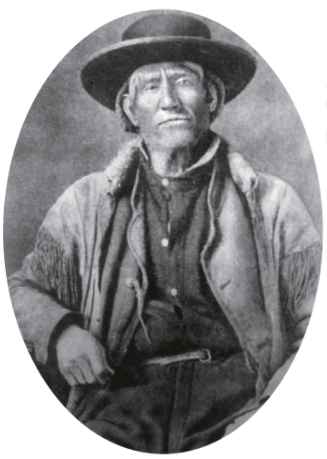
There are different accounts of his life, and some say he was an orphan and free-spirited. But I am more inclined to believe that the death of his relatives forced Jim Barreger to seek a way out for himself and his sister. He never received any formal education, but he was determined to give his sister a good education. The unfortunate experience made this young boy mature quickly.
Soon, Jim got his first job: working as a ferryman on the broad Mississippi River.
Although he had plenty of experience dealing with rivers when he was young, this job was still a bit difficult for an underage boy like him: the Mississippi River was turbulent and unpredictable, with occasional storms, floods, and unpredictable weather; what was even more terrifying was that the boatmen were often even more rude than the water.
However, Jim had a strong social adaptability and quickly learned from them the principle of observing words and expressions, speaking less and listening more.
Soon after, in order to get a more stable income, he left the ferry and became an apprentice in a blacksmith shop. What he gained here was: he quickly learned how to make various tools, and knew better than his peers how to get along with all kinds of people in a "jianghu" way.
However, even though he worked so hard, the family’s financial situation was getting worse and worse - his sister was growing up, the expenses needed were increasing, and his income showed no signs of growth.
He prepared for a rainy day. Although he had mastered the blacksmithing skills, St. Louis did not need a second blacksmith shop, and he did not have the tools and capital to open a shop. He was illiterate and could not be a salesperson. Moreover, even if he continued to work in the blacksmith shop, new apprentices would always appear in a steady stream, and he would be unemployed one day. Obviously, he did not have much time left.
At this time, the most important turning point in his life occurred: three days after his 18th birthday, anxious Jim saw a recruitment notice in the local newspaper, which said: "Hey, young man, let’s go on an expedition to the upper Missouri River, into the Rocky Mountains, and go to trade with the Indians."
Trade with the Indians."
Running to the Rocky Mountains
On March 20, 1822, 18-year-old Jim Bailey ushered in his coming-of-age ceremony. He left the blacksmith shop and joined General William Henry Ashley’s Rocky Mountain Exploration Expedition, heading to the upper Missouri River, and a new life unfolded before his eyes.
The team he joined needed to recruit a total of 100 young people. To be more precise, rather than an expedition team, they were a hunter team of Henry Ashley Fur Company, heading to the upper Missouri River to hunt beavers.
Beavers have high economic value. Not only is its meat delicious, but its fur is also water-free when it is out of water. The secretion of its scent glands, castoreum, is one of the four major animal fragrances in the world. Therefore, in the 19th century, beaver fur was a very important decoration. Whether in Europe or the United States, every upper-class person’s hat must have beaver fur. The fur trade became a very profitable business. Jim earned his first pot of gold here for his future adventure career.
The Rocky Mountains, as the watershed of the North American continent, are stacked with huge rocks and snow that never melts for thousands of years. In the language of the Indians, it is called Stone Mountain. Its snow-capped mountains meltwater converges into the source of many important rivers, including the Mississippi River, the Arkansas River and the Missouri River. Jim has lived at the foot of this mountain range since he was a child. From the Mississippi River to the Missouri River, his life is destined to be accompanied by mountains and rivers. He goes upstream and leaves no way out for himself.
It is worth mentioning that many people in this expedition team later became famous "mountain men" like Jim. In the history of pioneering in the American West from the late 18th century to the early 19th century, mountain men was a well-known name, which was used to praise white adventurers and pioneers who went deep into the wilderness.
After entering the Rocky Mountains, the expedition team met many Native Americans. Among them were the Shoshone people. This ethnic group was centered on the salt lake. In its heyday, its land ranged from northern Idaho in the north to northern Arizona in the south, and from eastern California in the west to western Montana in the east.
The Western Shoshone people used to live together with Spanish colonists and Mexican immigrants. By the 19th century, They have been around for several generations and are relatively friendly to foreign civilizations.
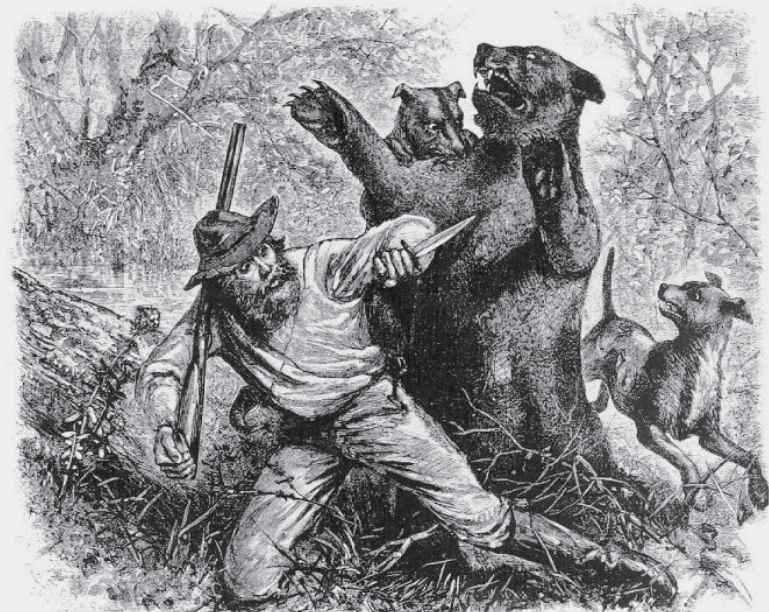
Previously, there was a clear written record proving that the expedition that set out in the year Jim was born had been in 1805 In 1825, Jim Barrymore and his team went deep into the Rocky Mountains to explore the terrain in the western and northern parts of Louisiana. They got along well with the Northern Shoshone.
As if guided by fate, Jim Barrymore and his team also came to the Rocky Mountains and established an annual fur trading market in the Wind River, Green River and Snake River basins to trade with the Indians. This market was officially opened in 1825 and ended in 1840, lasting 15 years.
Jim Barrymore’s mountain man mode has officially started since then. He is the "chosen one" among explorers. He has a strong memory for geographical details, is good at learning Indian dialects and culture, and can quickly adapt to the survival mode in the wilderness. But the fur trade he carried out at the foot of the Rocky Mountains was not smooth sailing, especially in In the spring of 1824, some crow hunters told Barrett’s companions that if they wanted to hunt beavers, they could only follow a flat Indian trail through the Wind River Mountains to reach the valley. If they threw traps into the valley, they could easily kill a lot of beavers with sticks.
Barrett and his companions were very excited after hearing the news. Their hunting trip was indeed full, and they thought they would make a fortune. But they never expected that on the way back, the ship carrying beaver furs would not be found. The beaver sank after being hit by the waves, and the furs that were finally salvaged were so few that they could not even pay off the debt.
However, if he had known what would happen in the autumn of that year, he would probably not be too sad about the beaver furs that floated away with the water - in the autumn of 1824, he would go down in history as the first recorded discoverer of the Great Salt Lake.
Discovery of the Great Salt Lake
The Great Salt Lake is located in the northwest of Utah, USA, and is the largest saltwater lake in the Western Hemisphere. Its three tributaries - the Bell River, the Jordan River, and the Weber River - inject 11,000 tons of minerals into the lake every year. Because the Great Lake is located inland, it cannot flow out and can only rely on evaporation. Therefore, the salinity of the lake is even higher than that of seawater. The Great Salt Lake is shallow and warm, causing the Great Lake Effect (a phenomenon in which cold air encounters a large, unfrozen lake, from which it gains water vapor and heat, and then forms precipitation on the windward shore of the lake, usually in the form of snow) to often occur in late fall and last into spring.
For more than a century, the Great Salt Lake has been a blind spot on American maps. Although the local Indians, the Ute tribe, were very familiar with the lake in 1776, the Great Lake had not yet been named. The first written record before this came from the Spanish explorer Elvis Tre, who told him how to get to the Great Salt Lake and recorded it, but he did not go. For decades, no white explorer had really set foot in the Great Salt Lake until Jim Bridger appeared.
It all started with a bet. In the autumn of 1824, in the valley of Utah, no one went to do the fur business that day, and the mountain hunters stayed in the camp to chat, and the content was nothing more than the hydrology and geography of the western mountains that they were most familiar with.
The hunters argued about the direction of the Bear River, disagreed, and quarreled with each other. The hunters decided to bet and invited an experienced person to verify who was right. So, Jim Bridger, the most outstanding and reliable explorer among them, was chosen by everyone to explore the direction of the Bear River.
Before setting off, Bridger slaughtered a buffalo and tied the buffalo skin to the ribs of a boat made of wicker to make a small boat. Then he paddled out and drifted down the canyon along the rapids. Then he jumped onto the river bank and climbed a small hill in the canyon to scout the terrain. From a distance, he saw an extremely vast water surface.
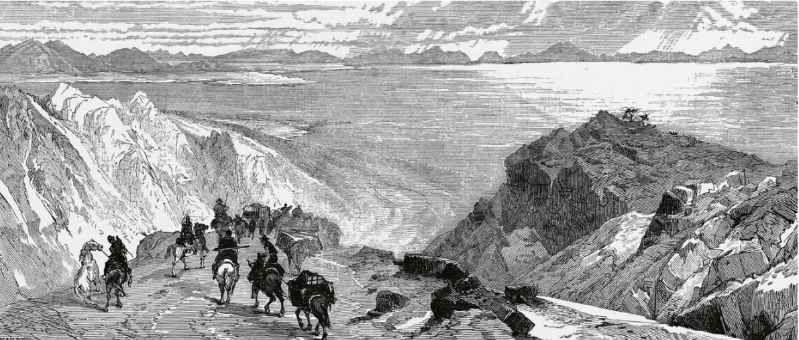
Would that be the source of the Bear River? His intuition told him to move forward towards the water surface. The boat carried him through the swamp and moved forward another 25 kilometers, finally passing through the mouth of the creek and entering the water surface. Barrett realized that gravity seemed to disappear a lot on this water surface, and it was easier to control the boat.
What’s going on? So he reached out and dipped his hand in some water and tasted it. The water was salty. Barrett accidentally discovered the Great Salt Lake, and this lake was indeed the source of the Bear River. However, due to the limitations of cognitive conditions at the time and the vast surface of the Great Salt Lake, for a long time, Barrett and his companions firmly believed that they had discovered a corner of the Pacific Ocean.
It is worth mentioning that as a great explorer, Barrett always had a special feeling for the Salt Lake Valley he discovered. It was for this reason that he conducted a very detailed reconnaissance of the entire Great Salt Lake Mountain Area. No one had done such a thorough investigation as he did. He was familiar with almost the entire river valley and every tributary, which was why he was often hired as a guide in the area in the later period.
The Legend of Yellowstone
The entire 1820s was the golden age of explorer Jim Barrett. In the second year after the discovery of the Great Salt Lake (1825, some say 1856), he entered the Grand Canyon of the Yellowstone along the Rocky Mountains. The United States subsequently established a national park of the same name, the world’s first and largest national park.
The Yellowstone Grand Canyon is located in the northwest corner of Wyoming in the Midwestern United States, extending northwest to Idaho and Montana, with a vast area of 8,956 square kilometers.
The source of the Yellowstone River comes from this canyon. It is said that in the late 18th century, French hunters named the river "Yellowstone" based on the language of the Mandan Indian tribe. Later, American hunters translated the French name into English as "Yellowstone". The name of the Yellowstone River is generally believed to be based on the yellow rocks in the Yellowstone Grand Canyon.
This is also the settlement of three Indian ethnic groups, the Nez Perce, the Crow tribe and the Shoshone. In 1805, the Lewis and Clark expedition entered this area for the first time, and it was still a wonderland unknown to the world.
Many people have entered the Yellowstone area. The first person to visit was John Coulter, who was a member of the Lewis and Clark Expedition and witnessed the wonders of this "land of fire and sulfur": swamps, boiling springs, geysers. However, no one believed that the place he said really existed, and people even jokingly named it "Culter’s Hell".
Berriett believed everything Coulter said. He once again followed the footsteps of his respected predecessors, the Lewis and Clark Expedition, and explored the Grand Canyon of the Yellowstone.
In an English biography of Bailey, Bailey’s experience of discovering the Yellowstone River and the Grand Canyon is accompanied by thrilling clips, which is completely a western movie.
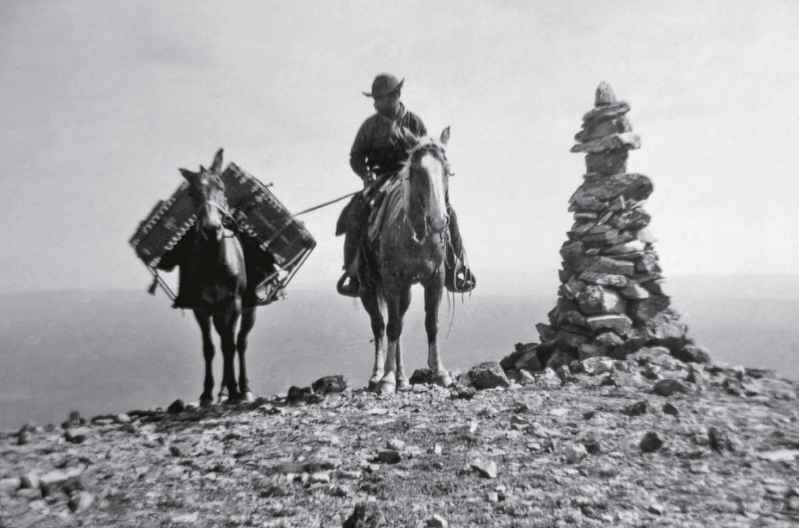
They entered the Grand Canyon along the Yellowstone River, but met Indians on a narrow road. "At this time, the river channel gradually tilted to the other side of the riverbed," "Indians with weapons shouted at them," "The buffalo herd rushed over frantically," Bailey and his exhausted companions abandoned their horses and goods and staggered back to the camp at the mouth of the Yellowstone River.
Berrije put down his backpack, hugged his rifle, and looked at the river, cliffs and woods in front of him. This Yellowstone River is so big, so wide that "even though they were in the mountains, they couldn’t see a mountain!" Of course, they did see the mountain later. They passed through the entire Yellowstone Grand Canyon and saw the cliffs and collapsed waterfalls of the Grand Canyon. He found boiling springs, fountains, petrified wood, sulfur mountain, fire hole river and obsidian cliffs and other Yellowstone wonders.
At this time in the early and middle 19th century, the industrial revolution was underway and the transportation revolution had not yet appeared. As explorers of the unknown land of the white world, mountain people were the story kings in the minds of the people in the settled areas. Their travel stories were spread among the people to a certain extent. Therefore, the natural wonders of the Yellowstone Park area spread to many areas in the West through Berrije’s narration. However, just like Kurt’s result, it was impossible to obtain physical evidence because photography technology was not yet mature and popular at the time. Also, Bailey’s experience was too legendary and was often considered a "teller of absurd stories", so many people did not believe in the existence of Yellowstone Park.
Some people also believe in the legendary experience of Barrie. In 1849, John Gunnison, a lieutenant of the U.S. Army, hired Barrie as a scout several times when he investigated the Salt Lake Valley on official business. John Gunnison recorded Barrie’s Yellowstone experiences in detail because of his absolute authority and reliability in the Salt Lake Valley. In Gunnison’s records, Barrie described in detail the romantic and charming landscapes of the Grand Canyon of Yellowstone.
It was not until 1870 that the official expedition team of William Henry Jackson entered the Yellowstone area with a camera. The wonders of Yellowstone became widely known and led to the establishment of the world’s first national park.
The reputation of the mountain man
It must be said that Jim Barrie is considered one of the most famous mountain men. Not only because he was one of the first white adventurers to explore the West, but also because in that era full of territorial expansion, resource plunder, and industrial conquest of nature, mountain people were a group of people who followed the trend of "westward movement" and opposed the trend of "industrialization". They insisted on loving peace, not exploring for the pursuit of fame or interests, and opposed racial discrimination and ecological destruction. They advocated living in harmony with indigenous peoples, white people, and nature.
Since Jim Bailey was one of the early explorers, his awareness of wilderness protection was not obvious. But on the road he walked, his successors included Henry Thoreau, John Muir and others. These early environmentalists added a lot of rationality and humanity to the history of American Western pioneering based on their advanced awareness of ecological protection and harmony between man and nature. Later, wilderness literature, environmental clubs, and national parks also emerged. By the end of the 19th century, as the task of opening up the frontier was basically completed, people’s understanding of themselves and the environment entered a new stage. The resource protection and wilderness protection movement arose in the United States, which was the first peak of American environmental protection.
These are all later stories, and the story still goes back to Jim Bridger. In 1830, he and several mountain friends started a fur trading company. In 1843, the business grew, and Bridger and another mountain man established a trading port, which was later named Fort Bridger, and became a rest stop for many western pioneers.
In the areas that Bridger explored, although those border trading posts no longer belonged to him, he left a more lasting mark: towns, trading ports, ski areas, wilderness reserves, national forests, streams, peaks and passes, mountains, forks, passes, ferries, lakes, plains, roads and trails named after him. These places are mainly distributed in Montana and Wyoming, along the Rocky Mountains that he loved all his life.
Jim Bridger was familiar with the mountains and rivers of the West, and he was not reluctant to use his experience to benefit more people. In 1850, he discovered the Bridger Pass, which obviously had a profound impact on the westward movement, saving 61 miles of distance on the Oregon Route. In 1869, the first transcontinental railroad was fully opened and replaced the Oregon Route, using the route discovered by Bridger. In 1956, Interstate 80 still used the route that Bridger had taken a hundred years ago. In 1864, he discovered the Bridger Pass, which provided a safer route for gold prospectors traveling from Wyoming to Montana, free from attacks by stronger indigenous peoples such as the Sioux and Cheyenne. Bridger himself also served as a guide and scout for the army. What made this explorer famous all over the world was more about his deep friendship with the Indians. He voted with his feet, went deep into the lives of the Indians, and became a bridge between them and the white world of America. His three wives were all Indians. Because of this, he must have offended many white and Indian people who were hostile to each other, putting himself and his family in danger.
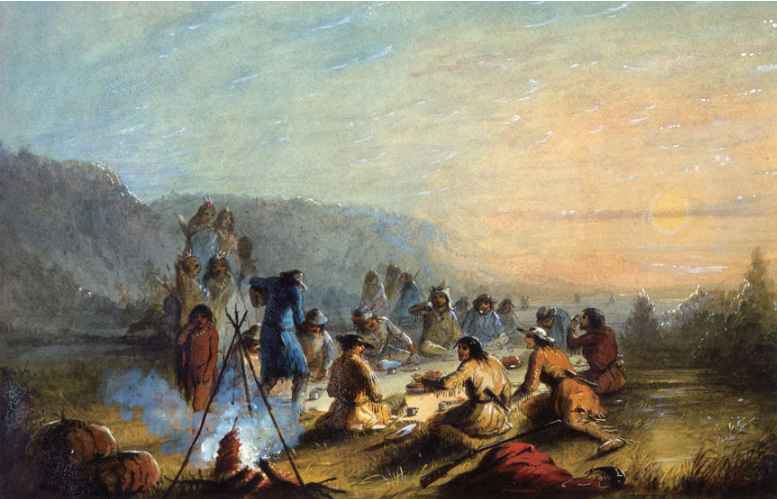
In 1835, he married an Indian Flathead woman and gave birth to 3 children. Unfortunately, his first wife died in 1846. He then married the daughter of the Shoshone chief, and 3 years later, disaster struck again. His wife had a difficult childbirth and died with her unborn child. In 1850, he married his third wife, a Shoshone woman. Fortunately, this wife did not die early and gave birth to 2 children for him. However, in the Whitman Massacre in 1847, 54 women and children were kidnapped by the Pony and Umatilla Indians and killed when ransom was not granted. Among them was the daughter of Barry. Afterwards, the sad Barry had to send his children back to the East for education. In 1881, James Barry (James is Jim’s official name) died in Missouri at the age of 77.
Jim Barry’s legendary life inspired explorers all over the world. It was adapted into a TV series by the National Broadcasting Corporation in 1966 and 1971. Many westerns also use Barry as a prototype to create the image of a wandering pioneer.


